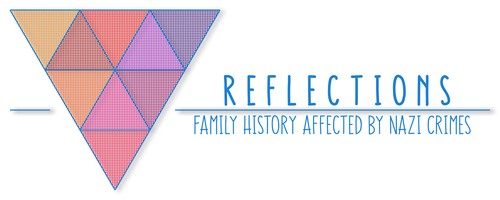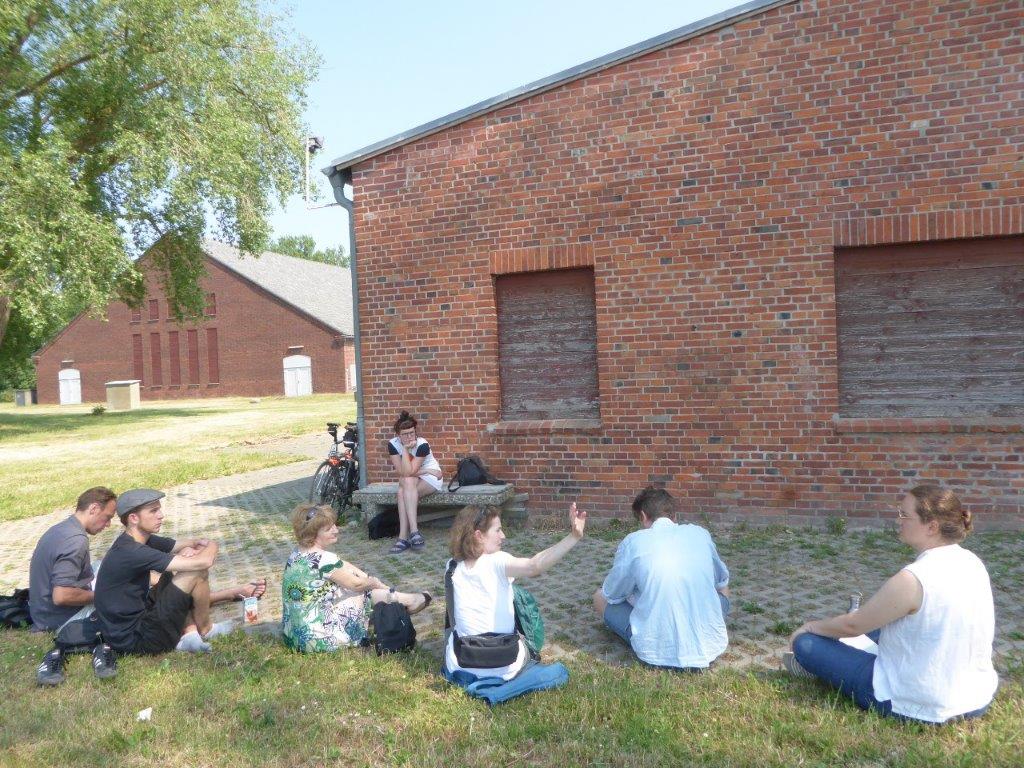We are currently working on quite a number of things in relation to the “Ort der Verbundenheit – A Place to Remember, Connect and Support” project. We have received much encouragement since the project’s inception, and we are excited by the first responses we are receiving from survivors’ relatives who are interested in memorializing one or more of their family members affected by the concentration camp system. We have also started working with students from the Hamburg School of Fine Arts to develop the design for the tangible memorial.
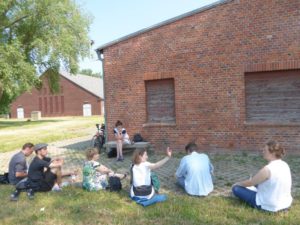
Students from the HfBK visit Neuengamme Concentration Camp Memorial (Photo: B. Hartje).
Design Possibilities for the “Ort der Verbundenheit – A Place to Remember, Connect and Support”
Firstly, we would like to thank all those who have been in contact since the start of the project. We are currently collecting the names and (email) addresses of relatives of survivors who may be interested in participating in the “Ort der Verbundenheit – A Place to Remember, Connect and Support”. As soon as we progress with the design of the “Ort der Verbundenheit – A Place to Remember, Connect and Support” – which will include individual space allocation for each former prisoner’s name as well as the place for relatives to portray their personal remembrance and connection to the place of suffering of their family members – we will write to all interested descendants and ask for their ideas.
Project Day for the students of the Hamburg School of Fine Arts
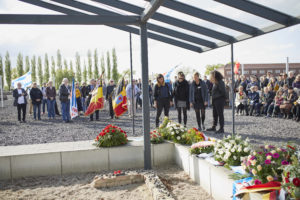
Wreath laying on May 3, 2018, at the site of the former detention bunker.
We are collaborating with Professor Jesko Fezer of the Hamburg School of Fine Arts and his students in the design process of the “Ort der Verbundenheit – A Place to Remember, Connect and Support”. The students are taking their task very seriously. Together with members of the working group “Ort der Verbundenheit – A Place to Remember, Connect and Support” the students participated in the commemoration on the occassion of the 73rd anniversary of the liberation of the Neuengamme concentration camp and the end of the war. On May 31st, 2018, the participating students explored the history of the Neuengamme concentration camp and its importance for descendants of former prisoners as part of the first of two project days.
Touring the grounds of the Neuengamme Concentration Camp Memorial
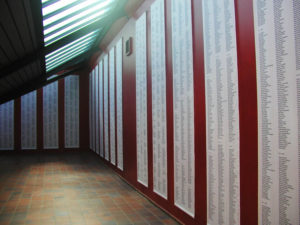
Fabric banners with the names of the prisoners who died in the Neuengamme concentration camp (Photo: ANg).
The tour began at the House of Remembrance, which exhibits the names of the murdered prisoners of the Neuengamme concentration camp on banners hanging from the ceiling to the floor. Relatives have placed flowers, signs or photos near the names of their family members. We quickly began to discuss our project’s central question: how do relatives feel when reading these names, and what would they like to see from the “Ort der Verbundenheit – A Place to Remember, Connect and Support”?
History and Post-history of the Neuengamme concentration camp
The students were accompanied by two guides from the Neuengamme Concentration Camp Memorial during their tour through the Memorial. The guides provided a foundation of information regarding the history of the Neuengamme concentration camp. They described the various prisoner groups, the daily life of the prisoners, life after liberation, and the survivors’ struggle for memorialization and remembrance.
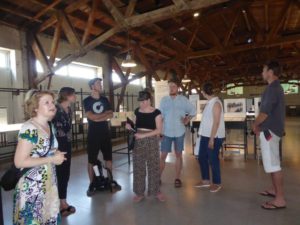
In the exhibition about the SS guards the students discussed how iinformation about perpetrators should be exhibited in the memorials for former concentration camps. (Photo: B. Hartje).
The students were especially interested in the original plan of the Nazis to rebuild Hamburg as a Fuhrer city (“Führerstadt”) as well as the question of how the memorial deals with vandalism and graffiti.
They were shocked to learn about the functions of the detention bunker during the concentration camp period. This knowledge gave a new meaning to the laying of wreaths and candles on May 3.
The candles and flowers lying on the stones raised questions within the group on how to incorporate the wishes of both the former inmates and their descendants in the design of the “Ort der Verbundenhet – A Place to Remember, Connect and Support”.
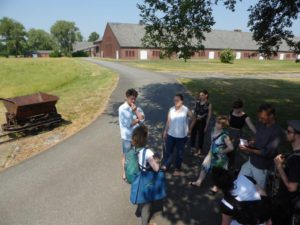
The students gained insights into the daily life in the camps, the struggle against the system of “Extermination through labor” and the use of the former concentration camp site after WWII especially in the area around the former brick factory. (Photo: Barbara Hartje.)
Living Memories
After our tour and a quick break, we met with Dr. Oliver von Wrochem, the Deputy Director of the Neuengamme Concentration Camp Memorial. At the students’ request, Dr. von Wrochem described the remodelling of the site that took place from 2003-2005. With regard to the “Ort der Verbundenheit – A Place to Remember, Connect and Support”, Dr. von Wrochem reiterated that it should be a place of living memory anchored in the present, not a place for remembering the dead, and thus the site is ever expandable and changeable.
Dr. von Wrochem also described the varying perspectives on and problems of remembrance through the example of prisoner groups – while Jewish and political prisoners have historically taken up a central location in German remembrance culture, few voices of other persecuted groups like Sinti and Roma, “asocials”, homosexuals or Eastern European prisoners are heard or remembered.
The seminar ended with an exchange between the students and some members of the working group “Ort der Verbundenheit – A Place to Remember, Connect and Support” .
The visit of the art students was part of a series of seminars. On June 20th, the students met with the working group to gain further insights into the continued effects of persecution on descendants. They also returned to the Neuengamme Concentration Camp Memorial for a seminar on the “Formal Language of Commemoration”.
